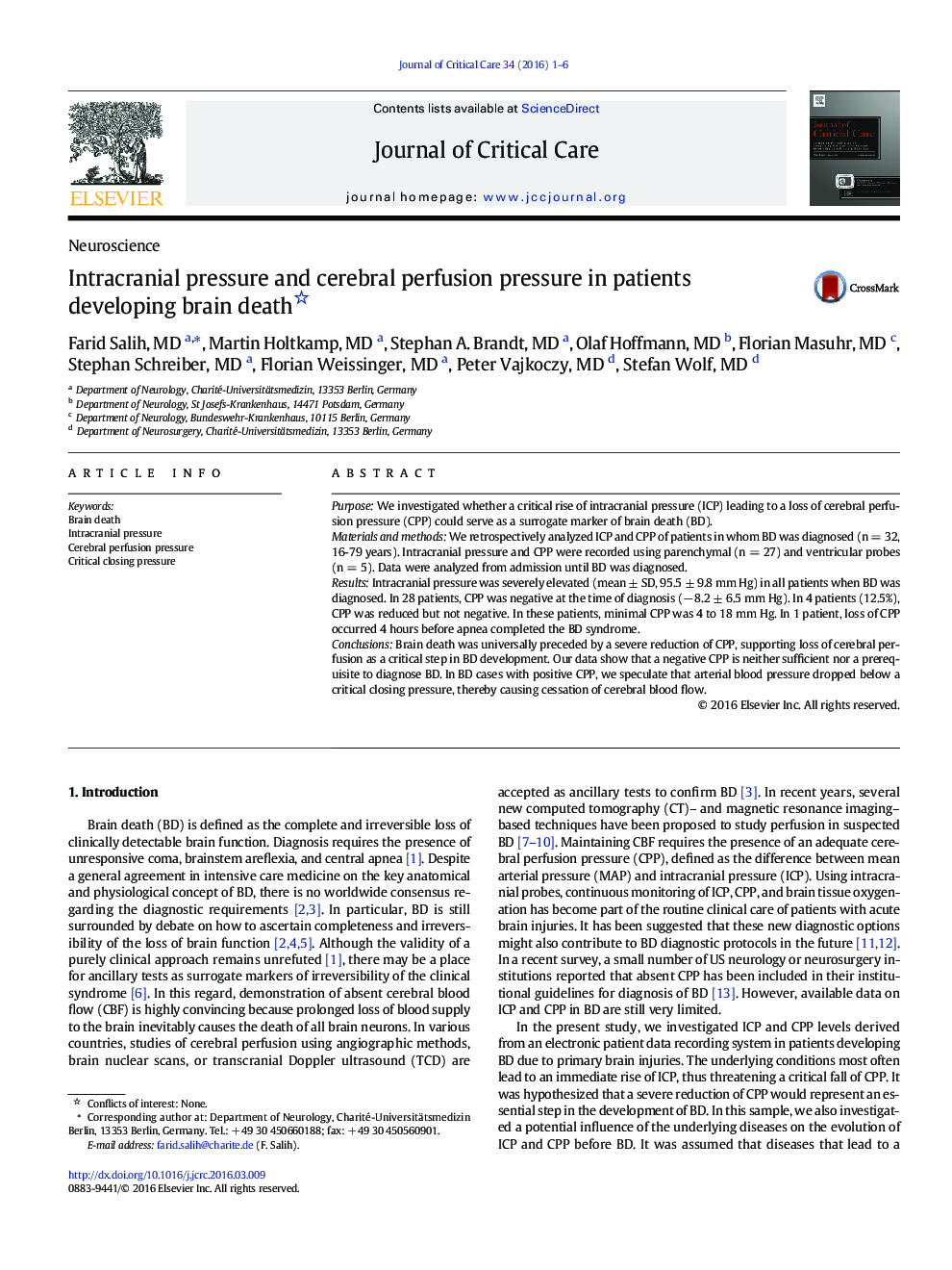| Article ID | Journal | Published Year | Pages | File Type |
|---|---|---|---|---|
| 5885136 | Journal of Critical Care | 2016 | 6 Pages |
PurposeWe investigated whether a critical rise of intracranial pressure (ICP) leading to a loss of cerebral perfusion pressure (CPP) could serve as a surrogate marker of brain death (BD).Materials and methodsWe retrospectively analyzed ICP and CPP of patients in whom BD was diagnosed (n = 32, 16-79 years). Intracranial pressure and CPP were recorded using parenchymal (n = 27) and ventricular probes (n = 5). Data were analyzed from admission until BD was diagnosed.ResultsIntracranial pressure was severely elevated (mean ± SD, 95.5 ± 9.8 mm Hg) in all patients when BD was diagnosed. In 28 patients, CPP was negative at the time of diagnosis (â 8.2 ± 6.5 mm Hg). In 4 patients (12.5%), CPP was reduced but not negative. In these patients, minimal CPP was 4 to 18 mm Hg. In 1 patient, loss of CPP occurred 4 hours before apnea completed the BD syndrome.ConclusionsBrain death was universally preceded by a severe reduction of CPP, supporting loss of cerebral perfusion as a critical step in BD development. Our data show that a negative CPP is neither sufficient nor a prerequisite to diagnose BD. In BD cases with positive CPP, we speculate that arterial blood pressure dropped below a critical closing pressure, thereby causing cessation of cerebral blood flow.
